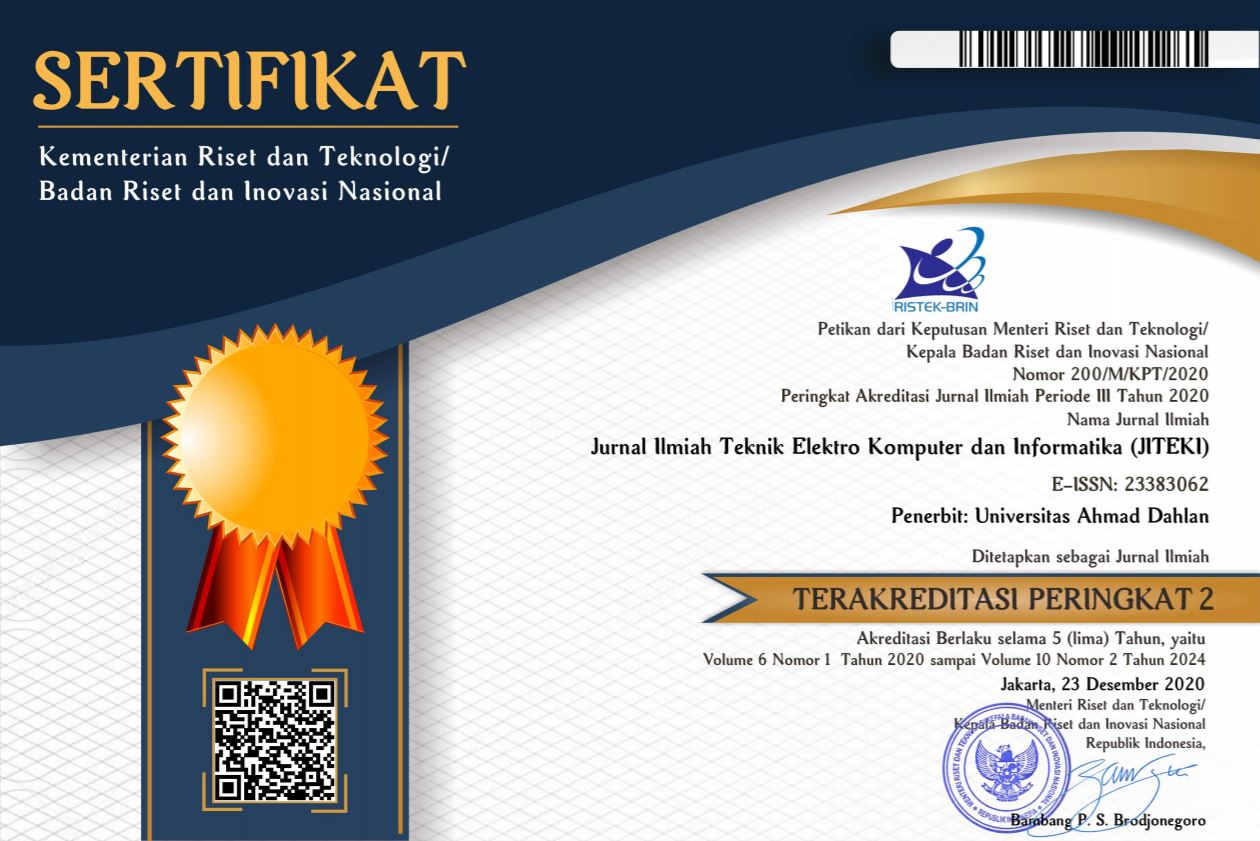Electrical Tomography Sensor Modelling for Detection of Fuel Proportion in Vessel
DOI:
https://doi.org/10.26555/jiteki.v9i2.26304Keywords:
Electrical tomography, ECVT, Sensor modelling, Multiphysics simulation, Linear back projectionAbstract
Electrical capacitance volume tomography (ECVT) is a method for determining the volumetric distribution of dielectric permittivity using the capacitance measurement principle. The determination of volumetric distribution of dielectric permittivity is important to regulate a process in which quantity of materials is a decisive parameter such as in industrial setting or vehicle sub-system. ECVT is a relatively fast and non-radiating method to observe spatio-temporal phenomena inside a process, making it a valuable technique. Sensor modelling and image reconstruction study are essentials in designing a suitable imaging system based on measurements from plurality of electrodes providing higher degree of information being observed. This research conducts sensor modelling with varying fuel objects in the interior of a cylindrical vessel. The capacitance value was simulated between a combination of eight electrodes mounted encapsulating the tube. Each measured electrode was given an excitation voltage as a source of an electrostatic field, which interacts with the object’s presence. The objects in this study are benzene, kerosene, and diesel fuel, along with reference dielectric values of water and air. Image reconstruction used the linear back projection (LBP) method. Matrix operations between sensor’s pre-defined sensitivity and capacitance values produce data that can be plotted into an image estimating the true distribution of objects. Capacitance values from modelling are proportional to the actual object’s permittivity. The reconstruction provides qualitative information on the proportion of fuel in the vessel based on the capacitance value. Images have distinct values according to the presence of different objects under investigation. The research contribution is a proof of concept in using capacitance tomography to detect different fuels inside an enclosed tank at modelling stage. In addition, this study serves as a guideline for implementing a non-invasive and non-intrusive system for determining proportions of materials of interests inside a certain setup.Downloads
Published
2023-07-03
How to Cite
[1]
R. Fahrizal, “Electrical Tomography Sensor Modelling for Detection of Fuel Proportion in Vessel”, J. Ilm. Tek. Elektro Komput. Dan Inform, vol. 9, no. 2, pp. 493–501, Jul. 2023.
Issue
Section
Articles
License
Authors who publish with JITEKI agree to the following terms:
- Authors retain copyright and grant the journal the right of first publication with the work simultaneously licensed under a Creative Commons Attribution License (CC BY-SA 4.0) that allows others to share the work with an acknowledgment of the work's authorship and initial publication in this journal.
- Authors are able to enter into separate, additional contractual arrangements for the non-exclusive distribution of the journal's published version of the work (e.g., post it to an institutional repository or publish it in a book), with an acknowledgment of its initial publication in this journal.
- Authors are permitted and encouraged to post their work online (e.g., in institutional repositories or on their website) prior to and during the submission process, as it can lead to productive exchanges, as well as earlier and greater citation of published work.

This work is licensed under a Creative Commons Attribution 4.0 International License

